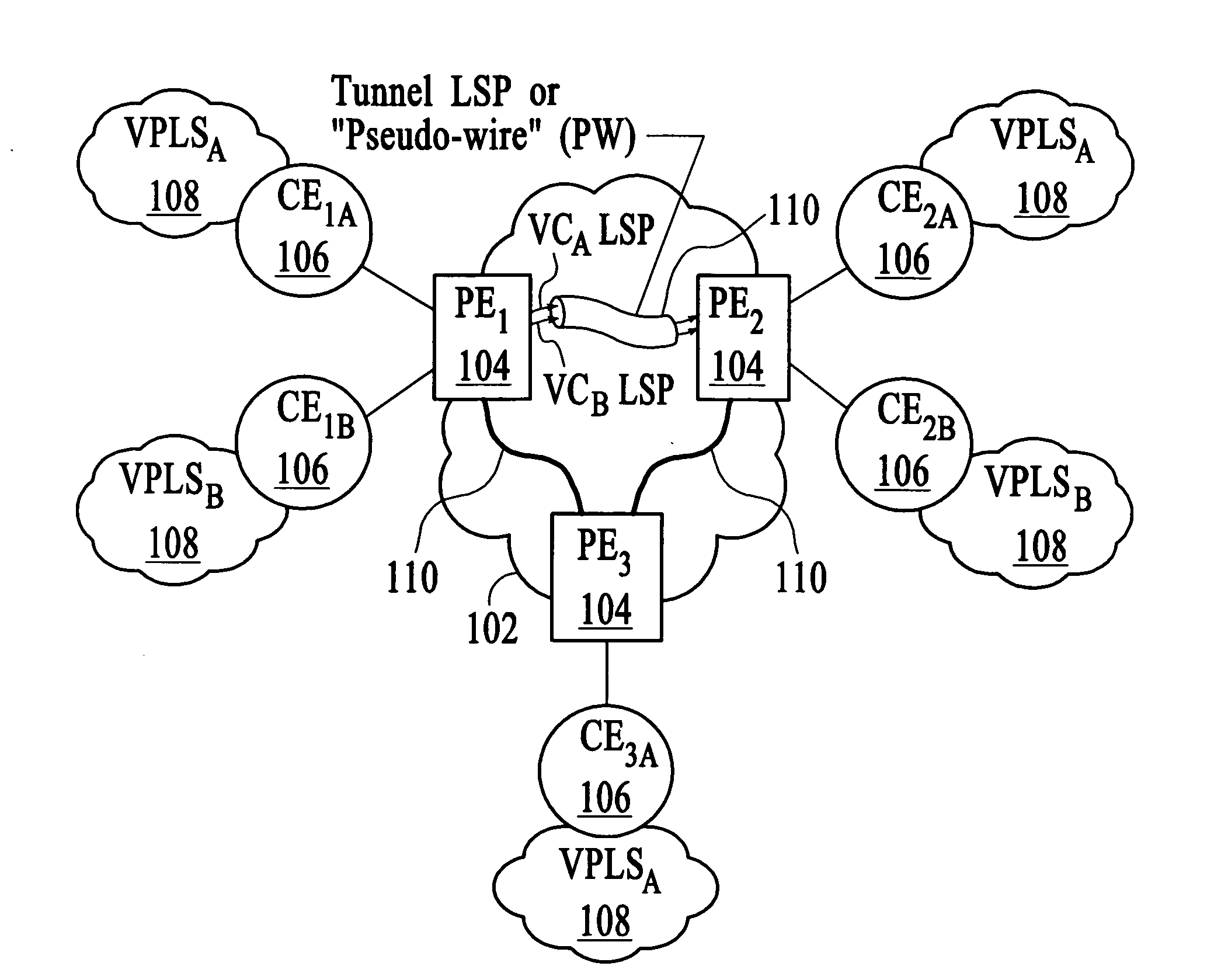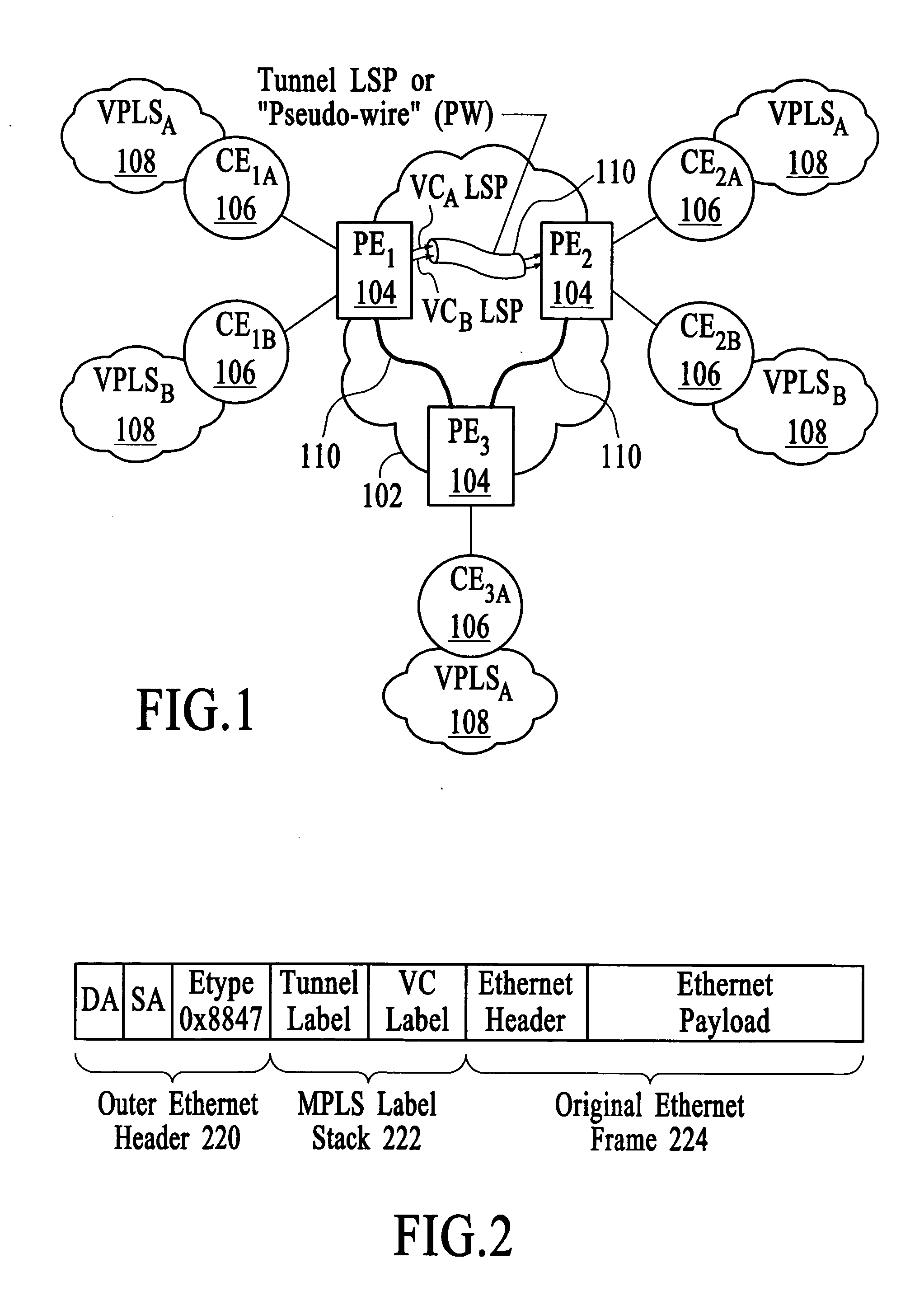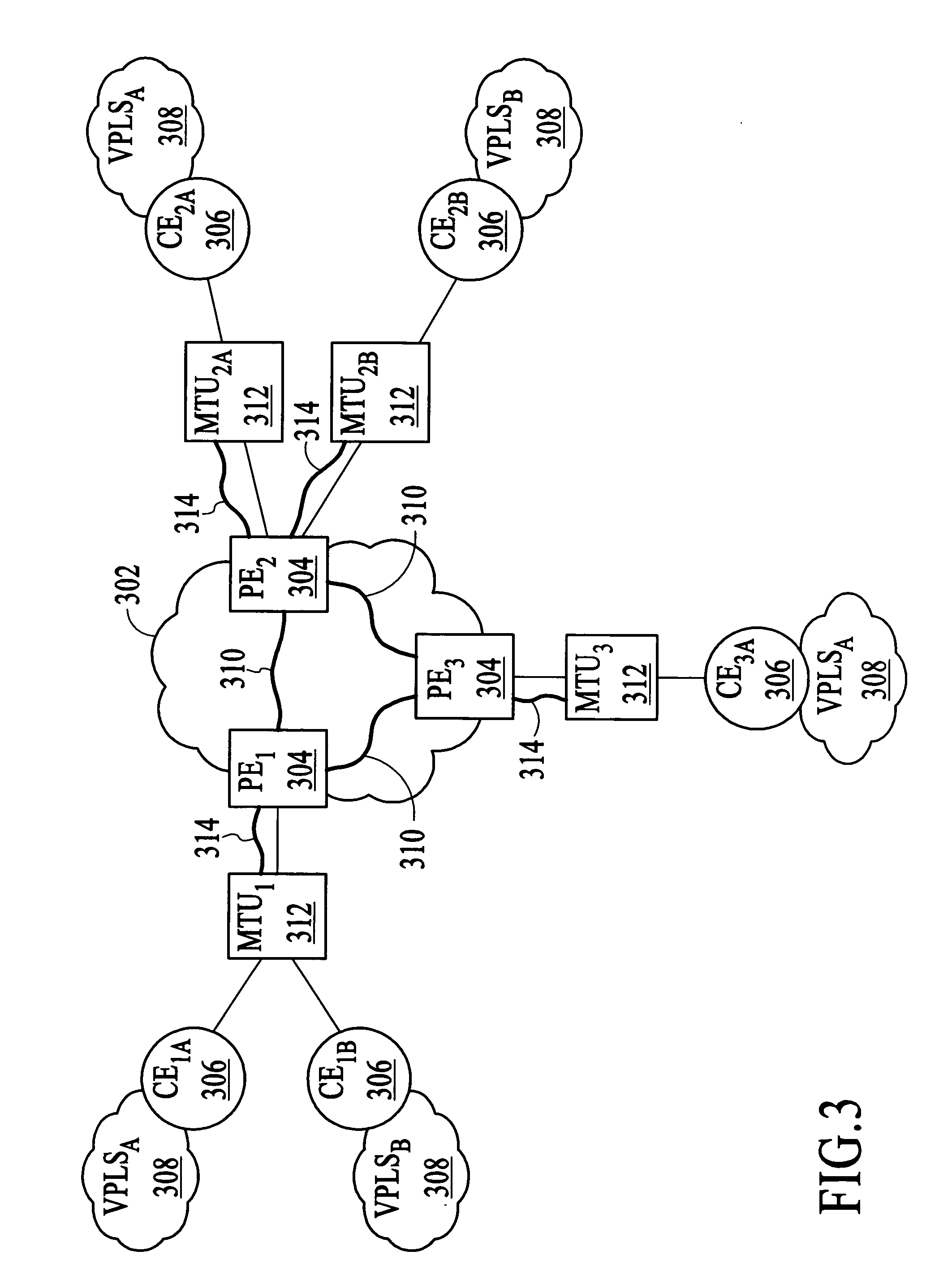Obtaining path information related to a virtual private LAN services (VPLS) based network
a virtual private local area network and path information technology, applied in the field of network management, can solve the problems of not being able to provide traceroute functionality, not being able to transfer functions to layer 2 networks, and not being able to implement retaining the ttl value in the tunnel label through an lsp switch
- Summary
- Abstract
- Description
- Claims
- Application Information
AI Technical Summary
Problems solved by technology
Method used
Image
Examples
Embodiment Construction
[0026]FIG. 4 depicts a portion of the VPLS-based network described with reference to FIG. 3. The portion of the VPLS-based network represents a path between two customer edge devices 406 (CE1A and CE2A) that utilizes the HVPLS-based architecture. The path includes MTU1, PE1, PE2, and MTU2A. As described above, HVPLS utilizes LSPs 310 and 314 to traverse the hops between the MTUs and PEs. To implement a VPLS service over this HVPLS-based architecture, it is desirable to be able to obtain path information related to the path that a customer's VPLS traffic takes between the customer edge devices. In the example of FIG. 4, the path of interest 430 spans the path between CE1A and CE2A.
[0027] In accordance with the invention, path information is obtained in a VPLS-based network by generating special Layer 2 (L2) frames (referred to herein as “trace-request frames”), performing source MAC filtering to identify the trace-request frames, and generating a special frame (referred to herein as...
PUM
 Login to View More
Login to View More Abstract
Description
Claims
Application Information
 Login to View More
Login to View More - R&D
- Intellectual Property
- Life Sciences
- Materials
- Tech Scout
- Unparalleled Data Quality
- Higher Quality Content
- 60% Fewer Hallucinations
Browse by: Latest US Patents, China's latest patents, Technical Efficacy Thesaurus, Application Domain, Technology Topic, Popular Technical Reports.
© 2025 PatSnap. All rights reserved.Legal|Privacy policy|Modern Slavery Act Transparency Statement|Sitemap|About US| Contact US: help@patsnap.com



